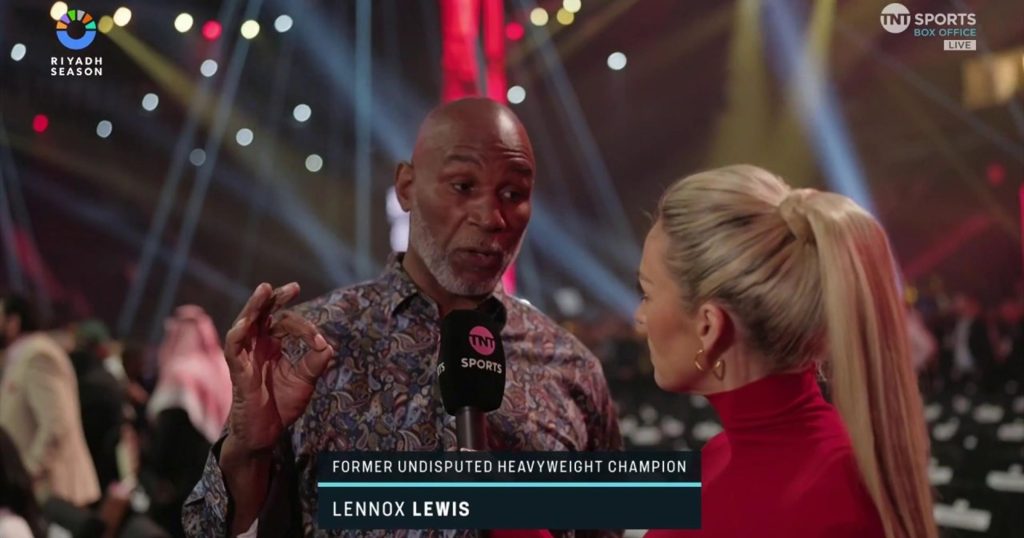The heavyweight boxing landscape remains a captivating mix of anticipation, speculation, and unresolved rivalries, with recent events further stoking the flames of debate. The rematch between Oleksandr Usyk and Tyson Fury, billed as a potential unification bout for the undisputed heavyweight championship, ended in a decision victory for Usyk, leaving many, including former undisputed heavyweight champion Lennox Lewis, questioning Fury’s tactical approach. Lewis expressed his belief that Fury should have adopted a more aggressive strategy against the smaller, but technically superior Usyk, suggesting a missed opportunity to capitalize on his size and power advantage. This critique, echoing the sentiments of many boxing analysts, adds fuel to the ongoing discussion about Fury’s fighting style and his ability to adapt to different opponents.
The fight itself, broadcast on TNT Sports Box Office for a pay-per-view price of £24.99 in the UK, was accessible across various platforms including discovery+, EE TV, Virgin Media TV, and Prime Video. This multi-platform availability, designed to maximize viewership, underscores the significant commercial interest surrounding high-profile boxing events. The fact that viewers did not require a pre-existing TNT Sports subscription to purchase the fight highlights the event’s standalone significance and the promoters’ efforts to reach a wider audience. The fight generated considerable revenue, reflecting the enduring popularity of boxing and the public’s appetite for heavyweight clashes.
Fury’s performance, while ultimately unsuccessful, also reignited discussions about his potential future opponents. Lennox Lewis, in his post-fight analysis, specifically called for Fury to face Anthony Joshua, a fellow British heavyweight contender. This matchup, long anticipated by boxing fans, would represent a significant domestic clash and potentially offer clarity within the division’s hierarchy. The potential fight carries both sporting and commercial significance, promising a lucrative event and potentially settling the debate about who holds the true claim to British heavyweight supremacy. However, the path to making this fight a reality is fraught with potential obstacles, including negotiations, financial considerations, and the fighters’ respective career trajectories.
The Usyk-Fury rematch not only impacted the immediate futures of the two fighters involved but also had broader implications for the heavyweight division. Usyk’s victory solidified his position as a dominant force, leaving him poised for potential unification bouts against other titleholders. For Fury, the loss represents a setback, but his continued prominence within the division ensures that he remains a significant draw and a potential opponent for any top-tier heavyweight. The ripple effects of the fight are likely to shape the landscape of heavyweight boxing for the foreseeable future, impacting matchmaking decisions and influencing the narrative surrounding future title challenges.
The complexities of the heavyweight boxing scene are further amplified by the ongoing debate surrounding undisputed championships and the fragmented nature of the governing bodies. With multiple organizations sanctioning title fights, the path to becoming the undisputed champion remains a challenging one, often requiring fighters to navigate complex negotiations and overcome various obstacles. The Usyk-Fury rematch, initially billed as a potential unification bout, ultimately failed to achieve that goal, leaving the division still without a single, universally recognized champion. This fragmentation adds a layer of intrigue and complexity to the sport, but it also creates challenges for fans and pundits attempting to discern the true hierarchy within the division.
Looking ahead, the future of the heavyweight division remains uncertain, yet full of exciting possibilities. The calls for a Fury-Joshua fight, the potential for Usyk to pursue further unification bouts, and the emergence of other contenders all contribute to a dynamic and unpredictable landscape. The outcomes of future fights, the decisions made by promoters and governing bodies, and the evolving ambitions of the fighters themselves will all play a role in shaping the future of heavyweight boxing. The only certainty is that the drama, both inside and outside the ring, will continue to captivate audiences and fuel the ongoing debate about who reigns supreme in the world of heavyweight boxing.














